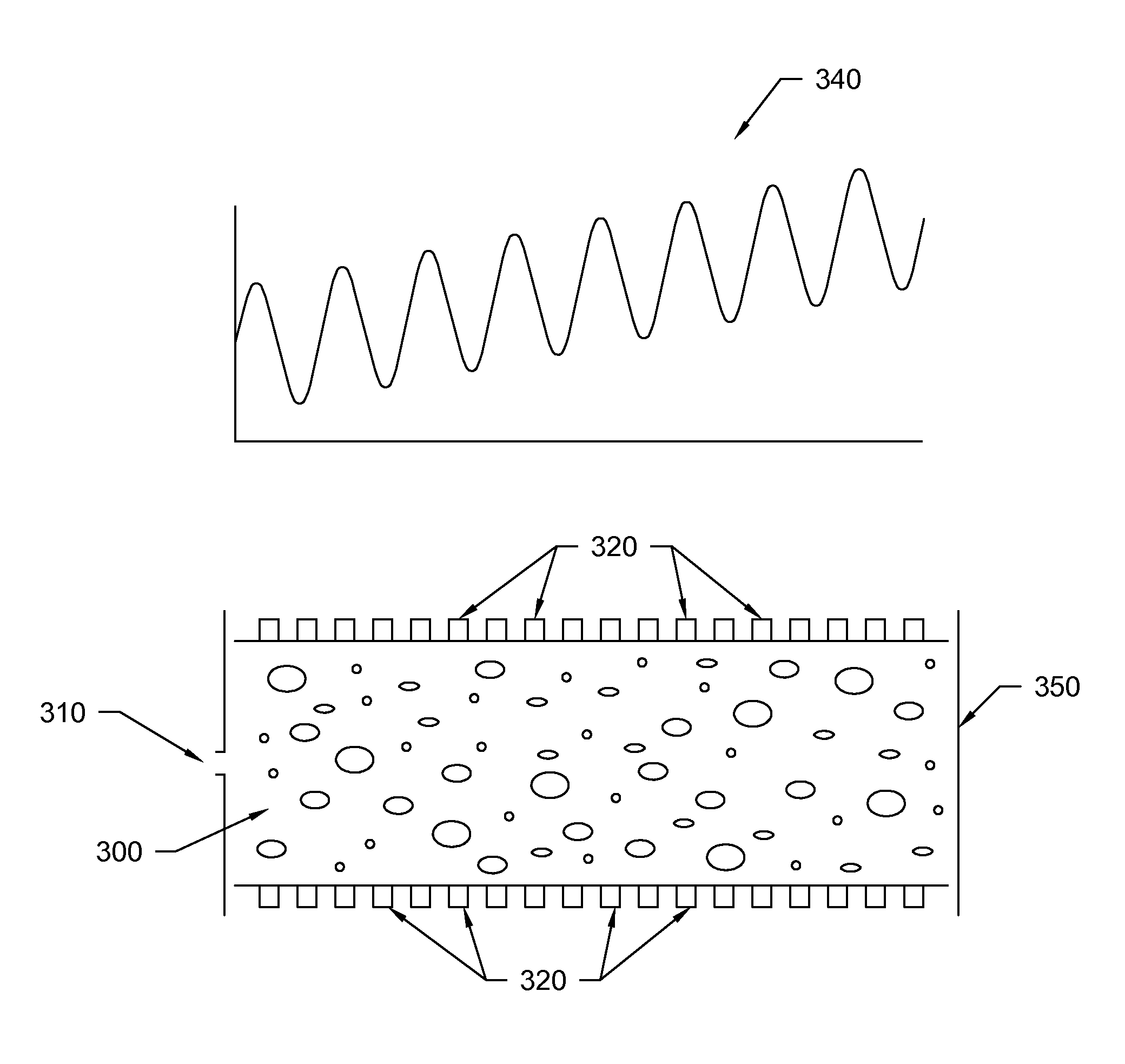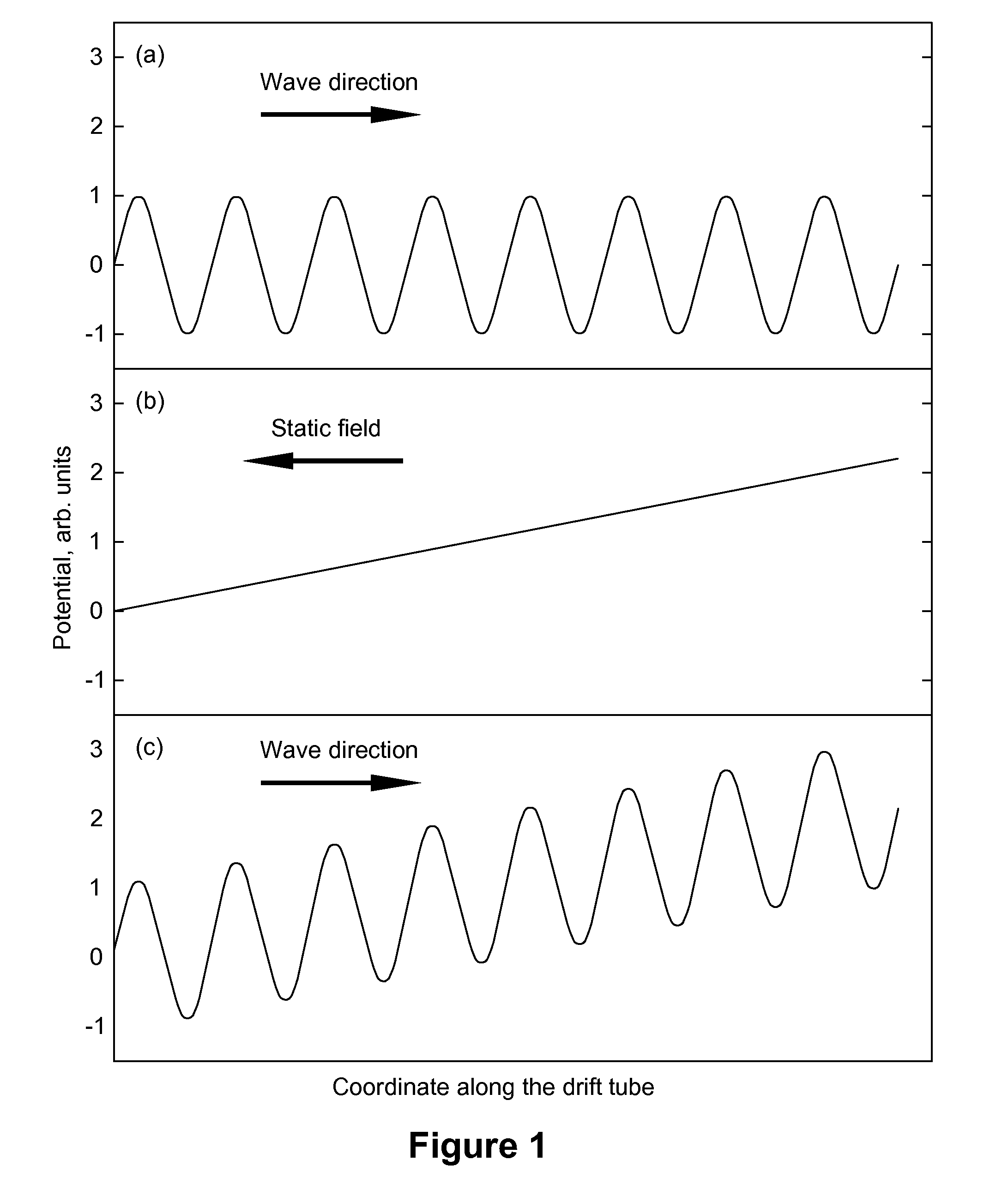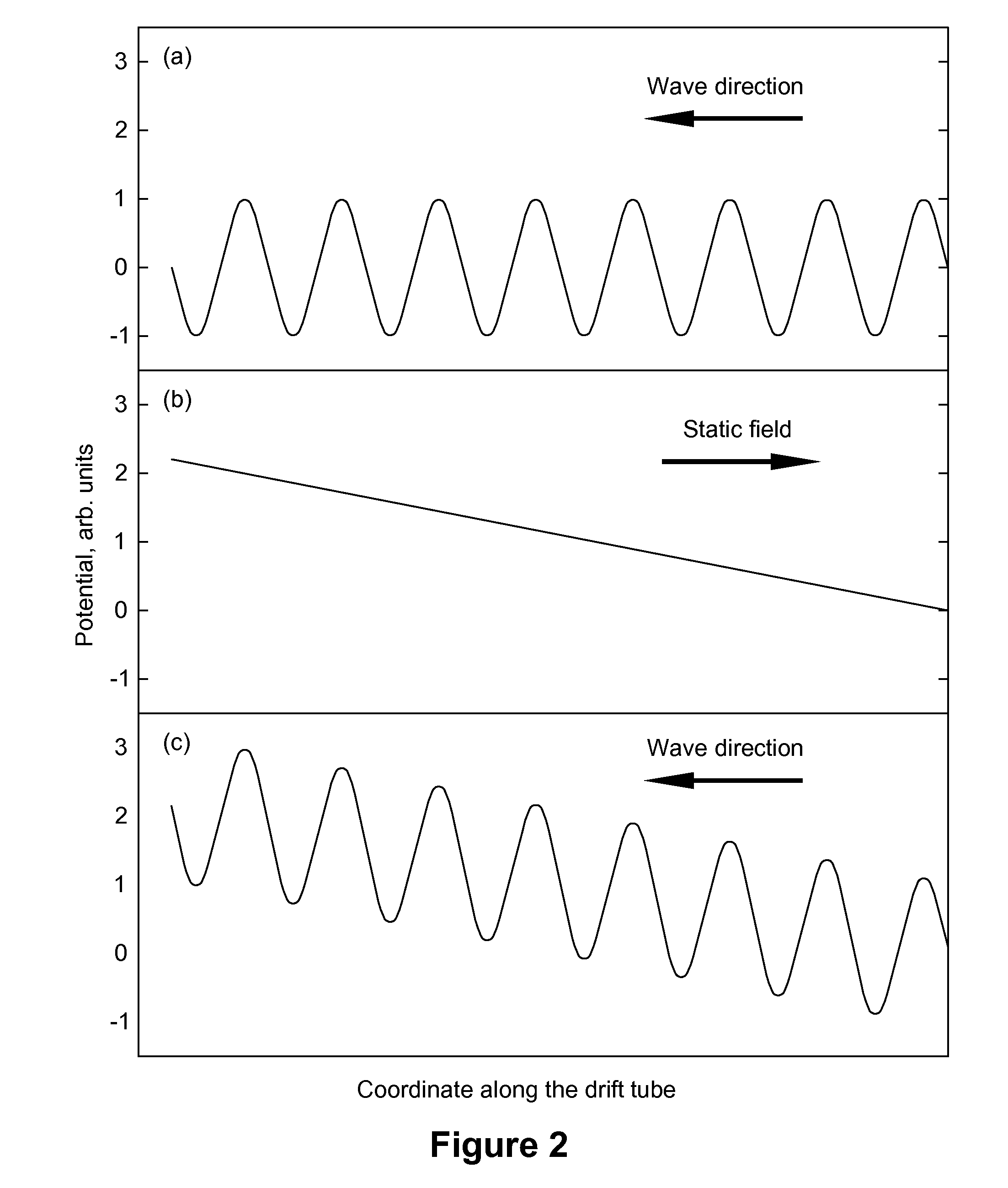Method for enhancing the resolving power of ion mobility separations over a limited mobility range
a technology of mobility separation and ion mobility, applied in the field of analytical separation, can solve the problems of reducing the resolution gain along the path, affecting the resolution, and reducing the resolving power, so as to improve the separation metrics, avoid exceeding the charge capacity of the electrodynamic funnel, and increase the resolving power
- Summary
- Abstract
- Description
- Claims
- Application Information
AI Technical Summary
Benefits of technology
Problems solved by technology
Method used
Image
Examples
Embodiment Construction
[0022]The resolving power and thus resolution and peak capacity of IMS using the TWIMS paradigm can be significantly raised over a limited mobility range by applying a “retarding” electric field opposite to the direction of oscillatory field wave. This regime enables a “zoom” mode with theoretically unlimited resolving power gain, at the cost of narrower mobility range and extended separation time. The retarding field can be static or an oscillatory wave propagated contrary to the first wave direction with different parameters—the amplitude, waveform profile, frequency, or speed.
[0023]The time-averaged drift velocity of an ion in a field wave depends on its mobility K non-linearly: approximately as K2 over a broad mobility range (Shvartsburg and Smith, Anal. Chem. 2008, 80, 9689). Conversely, the drift velocity in static field is linear with K (rigorously in the low-field limit, but in practice also at moderate fields typical for existing TWIMS implementations). Hence, the combinati...
PUM
 Login to View More
Login to View More Abstract
Description
Claims
Application Information
 Login to View More
Login to View More - R&D
- Intellectual Property
- Life Sciences
- Materials
- Tech Scout
- Unparalleled Data Quality
- Higher Quality Content
- 60% Fewer Hallucinations
Browse by: Latest US Patents, China's latest patents, Technical Efficacy Thesaurus, Application Domain, Technology Topic, Popular Technical Reports.
© 2025 PatSnap. All rights reserved.Legal|Privacy policy|Modern Slavery Act Transparency Statement|Sitemap|About US| Contact US: help@patsnap.com



